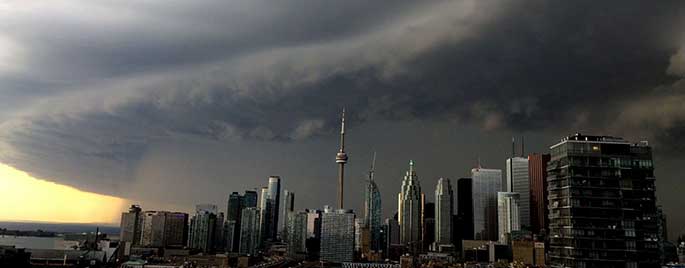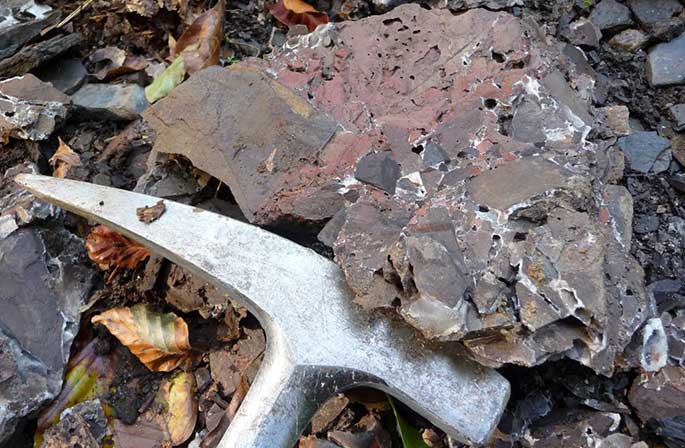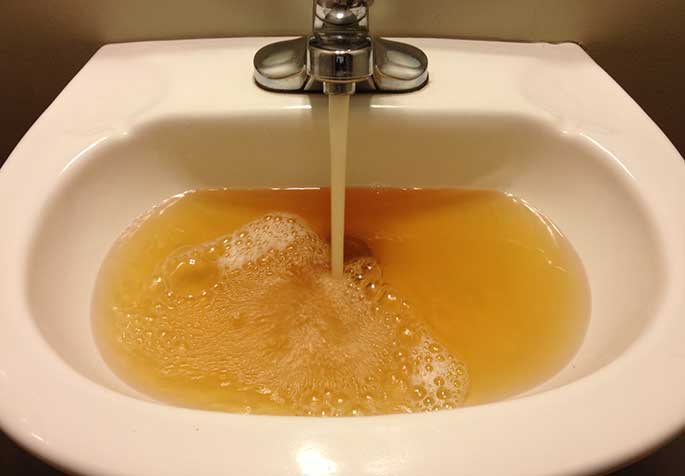The Manganese Menace: Real (Not Phantom)

(Photo credit: CTV News)
The Grief It’s Causing For Toronto Developers, And What To Do About It
Back in February of this year, the City of Toronto implemented some important changes to its Sewer Use Bylaw. What’s causing grief for developers and building owners is the new definition of private water i.e., water not purchased from the City but nevertheless requiring disposal into a City sewer. Private water now includes “storm water and/or groundwater accumulating or collected on private lands. (Toronto Bylaw 681-1 Definitions)”
This means that any discharge of collected storm or groundwater will now require a written approval from the City by way of a sewer discharge agreement.
Groundwater discharging to storm sewers must now meet the bylaw’s discharge criteria – or be pre-treated to ensure it meets the criteria before discharging it to the sewer. Many other municipalities around Southern Ontario have implemented similar bylaw changes and more are undoubtedly in the pipeline.
The developers and builders have been vocal about the impact of this big change. All developments have storm discharge which, under the old rules, did not require any testing. Now storm water discharges require metering and a sampling and analysis program. This alone can be quite onerous.
Enter manganese: an element that is naturally-occurring in common soil minerals and also present in many groundwater sources. The new Toronto sewer discharge limit for manganese is now the same as for drinking water! Working with developers, we have been encountering this new menace more frequently, and it is one of the main challenges in storm water quality discharging from new developments.

Failing to meet the new manganese storm sewer standard could result in the loss of the site’s groundwater discharge permit and increased costs for alternate storm water disposal options.
As discussed in our June 2016 newsletter – The Value of Bench Scale Testing – we regularly design and run bench-scale tests to assess and optimize treatment approaches for a wide variety of organic and inorganic contaminants, including manganese in many instances. We have also completed bench-scale treatment testing specifically for manganese in water. This has given us a deep understanding of water chemistry and treatment systems.
It is well known that an excess of manganese and iron in drinking water causes staining of household appliances and clothing, as well as a yellowish water appearance and unpleasant taste and odour in food and drinks. Manganese and iron also contribute to the water hardness and scaling, resulting in loss of pressure in pumps, water heaters and pipes. For these reasons, aesthetic limits are set for iron and manganese in drinking water.

Discharges to storm sewers are not subject to these same aesthetic concerns, and The City of Toronto not set a criterion for iron discharging to storm sewers. However, the criteria for manganese discharging to storm sewers is 0.05 mg/L – the same as the aesthetic objective for manganese in drinking water! This storm sewer discharge manganese standard also applies in areas near Toronto such as Mississauga, Oakville, and Peel Region, while some other jurisdictions have set higher allowable discharge limits for manganese.
Sampling studies demonstrate that in naturally-occurring groundwater, manganese often exceeds the drinking water objective in shallow aquifers due to natural or anthropogenic sources. Manganese can be present in groundwater at concentrations of up to 2 to 3 mg/L. The result is that groundwater with naturally elevated manganese levels requires treatment prior to discharging to storm sewers.
Manganese can be treated by a variety of approaches including ion exchange, oxidation/filtration or media adsorption but the form of manganese is an important consideration when designing the most effective treatment system.
Considerable concentrations of dissolved manganese are typically found in aquifers under reducing or low oxygen conditions. Under more oxidizing conditions, manganese reverts to solid forms which can be easily filtered. For example, a simple sediment filtration system will likely remove solid forms of manganese. Dissolved manganese provides a more interesting challenge.
In our lab we recently spiked water samples with dissolved manganese at concentrations ranging from 3x to 10x the acceptable storm sewer criteria, in an attempt to answer two questions:
1-Day Test: Can filter media be used to lower dissolved manganese levels to below the drinking water/storm sewer discharge criteria of 0.05 mg/L?
4-Week Test: Can filter media provide enough adsorption capacity over time to make filtration a practical solution for continuous discharges?
It turns out the answer to both questions is YES.
In our lab test columns, manganese removal efficiencies over the course of the 1 day trial, ranged from 83% to 99.9%, depending on the filter media used. For some media, manganese broke through the end of our media column on Day 1, while for others, efficient removal was continuously observed for the full 4-Week Test. Extrapolation of the data from column tests indicates that a field scale filtration system pumping tens of thousands of litres of groundwater daily from storm drains or weeping tiles, would provide months to years of effective manganese removal with a single media supply.
Real-life site conditions will not be so simple. The local geochemistry and presence of co-contaminants such as iron, other metals or organic contaminants will alter the approach for manganese removal.
In another example, a client recently requested we treat process water containing nearly every contaminant of concern imaginable – yes, including manganese. Our bench-scale, flow-through column treatment test consisted of micron-sized filters for sediment removal followed by a series of filtration media such as organo-clay, activated carbon, bone char, and activated alumina. In this trial, as expected, some manganese (in particulate form) was removed upfront via sediment filtration. To reach the desired effluent quality however (including for manganese), the process water needed to pass through the entire filtration/treatment train. We evaluated the removal efficiencies of each contaminant by each treatment medium in order to optimize the design for the full-scale treatment system.
In all cases, with seemingly simple and complex water samples, well planned bench-scale testing can provide the data and operational parameters for the design of effective full-scale treatment systems.
Based on our in-depth understanding of water chemistry and treatment systems we have been busy working with property owners designing, permitting and installing storm water treatment systems at sites in the GTA.
Are you prepared to meet the new manganese storm water discharge standard before your site’s groundwater discharge permit comes up for renewal? Or will you be caught out in the storm?


